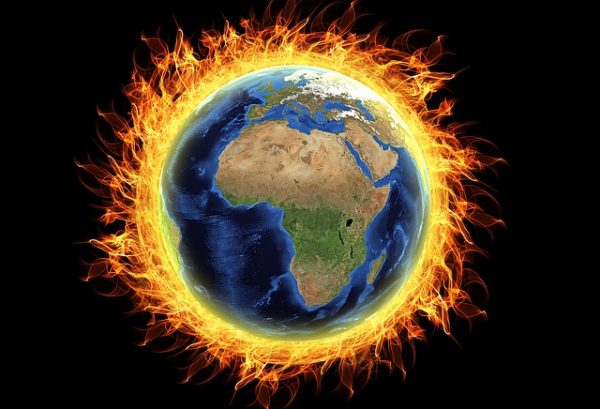"Lukewarming" challenges the climate change narrative: A new perspective on global warming
- Patrick J. Michaels and Paul C. Knappenberger's book "Lukewarming: The New Climate Science That Changes Everything" presents a moderate view of global warming, arguing that climate change is real but not as catastrophic as often portrayed in media and policy discussions.
- The authors propose the term "lukewarming" to describe a more gradual and less alarming warming trend, suggesting that evidence points to a milder increase in global temperatures than what is commonly projected by climate models.
- The book examines the bias toward alarmism in the scientific community, driven by the need for funding and media attention. Michaels and Knappenberger claim that reports like the U.S. National Climate Assessments often exaggerate climate impacts to support specific policy agendas.
- The authors highlight the historical contributions of scientists like Judith Curry and Will Happer to the concept of lukewarming, emphasizing the importance of skepticism and critical thinking in climate science. They argue that questioning assumptions is crucial for a deeper understanding of climate change.
- Michaels and Knappenberger critique the use of sulfate aerosols in climate models and the "availability cascade," a self-reinforcing process that leads to a distorted view of climate change. They argue that this cascade focuses on fear rather than fact, citing examples like the portrayal of sea-level rise and the Paris Agreement as more political than scientific.
The authors, both seasoned climate scientists, argue that the climate is indeed changing, but not in the dramatic, catastrophic manner often depicted in media headlines and policy discussions. Michaels and Knappenberger introduce the concept of "lukewarming," a term that encapsulates their belief in a more gradual and less alarming warming trend. They contend that the evidence points to a milder increase in global temperatures than what is commonly projected by climate models.
The book opens with an intriguing examination of the incentive structures within the scientific community. Michaels and Knappenberger suggest that there is a bias toward alarmism, driven by the need to attract funding and attention. They point to the U.S. National Climate Assessments as examples, claiming that these
reports often exaggerate the impacts of climate change to support specific policy agendas. As Michaels states, "The incentive to be alarming is strong, as it garners more funding and media coverage."
One of the most compelling aspects of "Lukewarming" is its exploration of the historical context of climate science. The authors highlight that the concept of lukewarming is not new, with contributions from scientists like Judith Curry and Will Happer over the years. They emphasize the importance of skepticism and critical thinking, arguing that the current climate change narrative often lacks these essential elements.
Michaels and Knappenberger also delve into the role of sulfate aerosols in climate models. They argue that these aerosols have been used as a "Band-Aid" to help models simulate past climate conditions more accurately. However, they question the validity of this approach, suggesting that it allows modelers to hold onto their paradigms longer than they should. "The use of sulfate aerosols in models is a double-edged sword," Michaels explains. "While it helps reconcile models with past data, it also masks the uncertainties inherent in our understanding of the climate system."
The authors critique the "availability cascade" in climate science, a term they use to describe the self-reinforcing process of collective belief formation. They argue that this cascade has led to a
distorted view of climate change, with the media, politicians and even some scientists focusing on extreme weather events and their supposed links to human activity. "The availability cascade is a powerful force," Knappenberger notes, "and it often leads to a narrative that is more about fear than fact."
Michaels and Knappenberger provide examples of this cascade, such as the way certain studies are highlighted in the media despite questionable methodologies or conclusions. They cite the case of sea-level rise, where adjustments to data have been made to fit a narrative of accelerating sea-level rise, even when the underlying data don't support such claims. "The data on sea-level rise is complex," Michaels states, "and it's important to look beyond the headlines to understand the true picture."
One of the most thought-provoking sections of the book is its discussion of the Paris Agreement. The authors argue that the agreement is more about politics than science, suggesting that it's a "lukewarm" agreement for a lukewarm world. They point out that the
commitments made by countries are largely voluntary and unenforceable, and that the agreement itself is unlikely to have a significant impact on global temperatures. "The Paris Agreement is a political document," Knappenberger asserts, "and it's important to recognize its limitations."
The authors also critique the way climate change is often linked to other societal issues, such as poverty, disease and national security. They argue that this "grand narrative" is misleading and distracts from the real challenges we face. "The focus on linking climate change to every societal issue is a distraction," Michaels argues, "and it prevents us from addressing the real challenges of adaptation."
"Lukewarming" offers a refreshing and provocative take on the climate change debate. It challenges readers to question the prevailing narrative and consider alternative perspectives. (Related:
“Climate Change: The Facts 2017” questions the prevailing narrative and encourages a more nuanced discussion on climate change.)
Learn more about lukewarming by watching the video below.
This video is from the
BrightLearn channel on Brighteon.com.
Sources include:
Brighteon.ai
Brighteon.com
 Parler
Parler Gab
Gab










